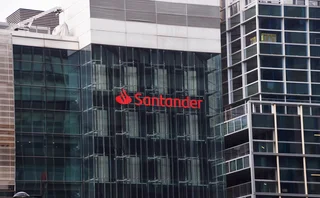
Weighing criticism of the SMA reveals a lack of balance
Operational risk managers are becoming unusually excitable, with some justification
 Operational risk managers at major banks are usually cool-headed and used to keeping calm under fire. Since March this year, however, they have become unusually excitable.
Operational risk managers at major banks are usually cool-headed and used to keeping calm under fire. Since March this year, however, they have become unusually excitable.
The reason for that is the Basel Committee on Banking Supervision’s proposal to introduce a new standardised measurement approach (SMA) for op risk capital. If introduced, the SMA will replace all existing approaches to op risk capital, including the simpler standardised approaches and the advanced measurement approach (AMA) used by more sophisticated banks. A consultation on the plans closed on June 3, and despite heated industry opposition, it is thought likely the committee will press ahead.
Few issues have stirred quite so much passion in the op risk community as the proposed removal of the AMA, which allows banks to use their own internal models to calculate op risk capital. But it was always clear that sooner or later, things would change.
The AMA’s inclusion in Basel II came about at a time when the discipline of op risk modelling was in its infancy. Rather than picking a single approach to modelling, it is portrayed as the Basel Committee’s way of ‘letting a thousand flowers bloom’, allowing more advanced banks room to experiment with different methods.
The floral motif is borrowed from former Chinese leader Mao Zedong, who used it in the 1950s to encourage constructive dissent in communist China. In its consultation, the Basel Committee said its expectations of the AMA “failed to materialise”. Its experience is not dissimilar to that of Mao, who launched a vicious crackdown after receiving more criticism than he probably expected.
The more important debate relates not to the replacement of the AMA, but to its proposed successor, the SMA. Op risk practitioners have branded the new charge as “insanity” and “a disaster”, with some writing that it “could very well become a source of operational risk in itself”.
Currently, the AMA allows banks to take four categories of input – internal loss data, external loss data, scenario analysis, and business environment and internal control factors – and incorporate them into their capital models in any proportion they see fit. The SMA relies on a measurement called the ‘business indicator’ – a proxy for bank size based on gross income – and just one of these four categories, namely internal loss data.
Practitioners say this laser-like focus on historical losses makes the SMA excessively backward-looking and insensitive to current levels of risk. This means some banks would be unfairly penalised for past op risk blunders, including those in business lines they had since closed or sold off. Conversely, firms that had experienced lower historical losses would benefit from a lighter capital burden, even if they were now aggressively expanding into riskier areas.
Some argue that the heavy emphasis on internal loss data might even lead banks to misreport their losses. By characterising an op risk loss as a credit risk loss, for example, banks might be able to lower their historical loss numbers and therefore minimise their capital charge under the SMA.
In its wider overhaul of bank capital rules, the Basel Committee has insisted it is pursuing the three objectives of risk sensitivity, simplicity and comparability. But the reality is that they can’t all be achieved at the same time. Pushing up risk sensitivity tends to reduce simplicity and comparability. Increasing simplicity and comparability – as supervisors have done in this instance – tends to damage risk sensitivity.
In truth, there is a balance required between the three aims. Criticism from the industry suggests that, when it comes to the SMA, the committee has got this balance wrong.
Only users who have a paid subscription or are part of a corporate subscription are able to print or copy content.
To access these options, along with all other subscription benefits, please contact info@risk.net or view our subscription options here: http://subscriptions.risk.net/subscribe
You are currently unable to print this content. Please contact info@risk.net to find out more.
You are currently unable to copy this content. Please contact info@risk.net to find out more.
Copyright Infopro Digital Limited. All rights reserved.
As outlined in our terms and conditions, https://www.infopro-digital.com/terms-and-conditions/subscriptions/ (point 2.4), printing is limited to a single copy.
If you would like to purchase additional rights please email info@risk.net
Copyright Infopro Digital Limited. All rights reserved.
You may share this content using our article tools. As outlined in our terms and conditions, https://www.infopro-digital.com/terms-and-conditions/subscriptions/ (clause 2.4), an Authorised User may only make one copy of the materials for their own personal use. You must also comply with the restrictions in clause 2.5.
If you would like to purchase additional rights please email info@risk.net
More on Risk management
Quant Finance Master’s Guide 2025
Risk.net’s guide to the world’s leading quant master’s programmes, with the top 25 schools ranked
Regionals built first-line defences pre-CrowdStrike
In-business risk teams vary in size and reporting lines, but outage fears are a constant
Op risk data: Santander in car crash of motor-finance fail
Also: Macquarie fined for fake metals trade flaws, Metro makes AML misses, and Invesco red-faced over greenwashing. Data by ORX News
Public enemy number one: the threat to information security
Nearly half of domestic and regional banks report risk appetite breaches amid heightened sense of insecurity
Credit risk transfer, with a derivatives twist
Dealers angle to revive market that enables them to offload counterparty exposures, freeing up capital
Op Risk Benchmarking 2024: the banks
As threats grow and regulators bore down, focus shifts to the first line
Fed stress-testing operational readiness of discount window
Experts say consultation on improved ops should be accompanied by focus on willingness to borrow
Millennium risk manager defends leverage in basis trade
“Gross notional measures don’t equate to market risk,” says Scott Rofey







